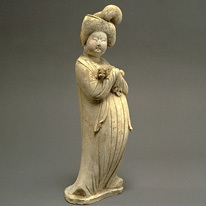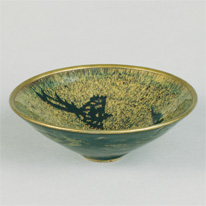Past Exhibitions
- Ceramics of Japan and Asia
- January 2, 2016 - March 13, 2016
Traditionally, ceramics has been an applied art, not only for viewing but also used as dishware or everyday furnishings, and is a familiar part of our surroundings. Ceramics produced in East Asia in particular vary widely in terms of pattern, form, and color, and are used for an extraordinarily wide range of applications. Works from different production sites are made with different materials, such as earthenware or porcelain, and have strongly distinct character depending on the variety of clay, glaze materials, ornamentation, firing technique and so forth. Here we present a variety of ceramics primarily from Japan, China, and the Korean Peninsula, along with explanations of their distinctive qualities and unique appeal.
- Tenmoku: Chinese Brown- and Black-Glazed Tea Ceramics
- January 2, 2016 - March 13, 2016
Tenmoku refers to tea ware made in China for the purpose of drinking matcha (powdered green) tea, which are generally glazed in black or brown and take the form of bowls. A large number of them were imported into Japan in the Heian (794-1185) and Kamakura (1185-1333) periods along with knowledge of the methods of preparing matcha tea, and in the ensuing Muromachi Period (1336-1573) were not only used for drinking tea, but also classified and named according to type, and appreciated for their artistic as well their functional value. Some of these classifications and their characteristics are highlighted here.













